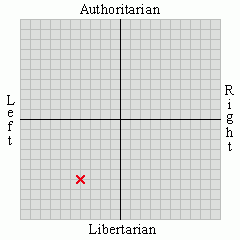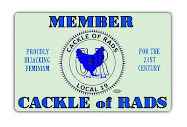That's not how The New York Times sees it, of course:
It should be no surprise that The Village Voice has ended its print edition in favor of an online, digital-only presence. The alternative newspaper, whose weekly edition once helped set New York’s political and cultural agenda, is merely going the same route as a slew of other newspapers and magazines before it.Yes, because they went online.
Most of those "paywalls" are about as effective as a chain-link fence is at preventing the flow of water. When a publication goes online, they are giving their shit away for free. You tell me, how does a private enterprise succeed by giving away its product?
I will give you an example of the dumbshitedness of The New York Times: They offer digital subscriptions in their print service areas. A regular 7-day print subscription in the New York metro area is about $15.50 a week. A basic digital subscription is $3.75. For $6.25 a week, you get two enhanced digital subscriptions.
So, for a quarter of the price, you get to read everything and all of those print advertisers lose eyeballs.
How the hell does that make business sense, people?
(And that would assume that The New York Times had a relatively impermeable paywall. Which they absolutely do not.)
A newspaper may be able to exist in its home market if it's a print-only operation. But most of them, if they go on line, will die, sooner or later.









3 comments:
In a way, I kind of sympathize with their dilemma: solvency through advertisers paying to get access to readers or paying readers getting expensive research & reporting free of ads.If they do fearless reporting (assuming that they're even capable of it), the ad revenue goes away because they're "controversial" . I'm not sure if there's an economic space for a progressive analog to Fox News as we have historically cast a wider net for news. The Times/Wapo etc. have to accept the fact that no matter the quality of their product +- 1/2 of their readers now consider them "fake news" so they're pretty much cornered.
I've been in and around the newspaper business for nearly 60 years - started on a hot type 6 day daily for a town of 10,000 and a county of 30,000 (6,000 plus were farmers)... we had 11,000 subscribers and newstand of 3~4,000. Paper was 14x20" iirc, and we ran 16~18 pages, 20~22 on Saturdays. Six full-time reporters in the county seat / home office, another 4 or 5 1/2 to 3/4 time reporters county-wide, 2 full-time photographers. A managing editor, an editor, a publisher, 3 or 4 people in the business office, 2 or 3 full-time ad people and at least 3 or 4 guys on the linotypes-composition and another 3 or 4 guys on the press plus a couple of circulation guys... Almost 30 folks full-time equivalent getting living wages. The owner took a salary and the lion's share of our year-in, year-out 6% ROI...
Only a few of us had college degrees, and not always in journalism; most of the staff started as paper boys. Then the old owner died, the paper was taken over by a consortium of investors, the editors were canned and a new editor, an MBA with some J school took over. First he fired half the reporters, one photog, and almost all of the stringers, switched over to offset print, filled the paper with wire copy, cut the page count to 10~12. About 12 years ago the paper went 3 days a week, fired more staff. Now it's down to 2 days a week and total circulation is around 5,800. There's still some city council and county commissioner reporting, but it's not the mandatory go-to it was.
Every reporter and editor worth their salt knew in their bones content was the name of the game. But the MBAs knew better.
The main problem with not going electronic is that millennials won't read paper. They view paper with somewhat the same disdain that my generation viewed horse and buggy -- i.e., it's a quaint relic of a previous century. If you don't go electronic, you have a declining readership as year after year, your current readership dies and is not replaced. Furthermore, because your fixed costs are the same regardless of how many readers you have, you end up with collapsing profits -- it takes the same number of paperboys to deliver the papers whether you have 11,000 to deliver or 5,800 to deliver, because you still have to ride up each and every street delivering papers, you're just tossing fewer on each block. That's one reason why my local newspaper keeps begging me to go electronic -- if they can get everybody on my block to go electronic, they can do away with the paperboys. (Actually, a nice elderly Chinese lady delivers my paper out of an equally elderly minivan, I use "paperboy" for lack of a better word for what she does).
But of course I don't go electronic, because I can't spread out a computer screen across the table while I'm eating lunch. Furthermore, while screens keep getting bigger, they still don't display as much text as an open newspaper, I find reading my local newspaper on the Internet to be extremely annoying. Finally, I can't cut coupons out of a computer screen! So my local newspaper is frustrated. They had to go electronic to get younger people to read them, but now their declining population of "we want our newspaper to be *paper*, dammit!" people is costing more and more per customer to provide them with the paper newspaper....
Shorter me: The old newspaper business model was doomed regardless of what newspapers did. They have to come up with a new model. I guess being run as a personal playtoy of a wealthy oligarch who doesn't care about making money is one such business model (see: Washington Post, Washington Times, New York Post, etc.), but it's one that really doesn't scale, plus comes with so many unseemly strings attached....
Post a Comment